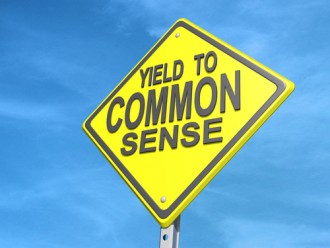June 8, 2020
Joint Ownership of Patents: It Is Not Always Nice to Share
Joint ownership of a patent creates complications for the joint owners. Pursuant to 35 USC 262, “each of the joint owners of a patent may make, use, offer to sell, or sell the patented invention within the United States, or import the patented invention into the United States, without the consent of and without accounting to the other owners.”
This means that each of the joint owners can use the patent or license the patent to someone else, and not have to ask the other joint owners, and not have to share any of the proceeds with the other joint owners.
A consequence of this statute is that the particular percentage of ownership is irrelevant: the joint owner of 1% of a patent has the same rights as the joint owner of 99% of the patent.
A second problem with joint ownership is splitting the costs of obtaining and maintaining the patent. If one or more of the joint owners doesn’t want to contribute to the costs, the remaining co-owners have to pick up the slack. Even if everyone pays their fair share, disagreements over strategy will also need to be settled among the owners.
Finally, when it comes time to enforce the patent, the Court of Appeals for the Federal Circuit requires that all of the joint owners participate in the law suit. Moreover the Federal Circuit has indicated that one owner cannot force other joint owners to join a suit.
There are at least two solutions to the problems of shared patent ownership. The first solution is to eliminate shared ownership by forming a entity, such as a limited liability company, to hold all of the patent rights. This allows all of the problems of joint ownership to be resolved by the operating agreement of the entity.
The second solution is to have the joint owners sign an agreement that they will share the costs and benefits of the patent. This solves the problems of joint ownership though a negotiated agreement.
Key provisions of such an agreement include:
- A mechanism for making decisions about prosecution of the patent
- A mechanism for making decisions about enforcement of the patent
- An apportionment of costs of obtaining, maintaining, licensing, and enforcing patents
- A mechanism for addressing joint owners who do not pay their share of costs
- An apportionment of revenue from using, licensing, and enforcing the patent
- A duty to join in infringement actions
For reference, the Federal Circuit has stated that a joint invention is simply the product of a collaboration between two or more persons working together to solve the problem addressed.
To be a joint inventor, one must:
- Contribute in some significant manner to the conception or reduction to practice of the invention.
- Make a contribution to the claimed invention that is not insignificant in quality when that contribution is measured against the dimension of the full invention.
- Do more than merely explain to the real inventors well-known concepts and/or the current state of the art.
There is no explicit lower limit on the quantum or quality of inventive contribution required for a person to qualify as a joint inventor. People may be joint inventors even though they do not physically work on the invention together or at the same time, and even though each does not make the same type or amount of contribution.




































